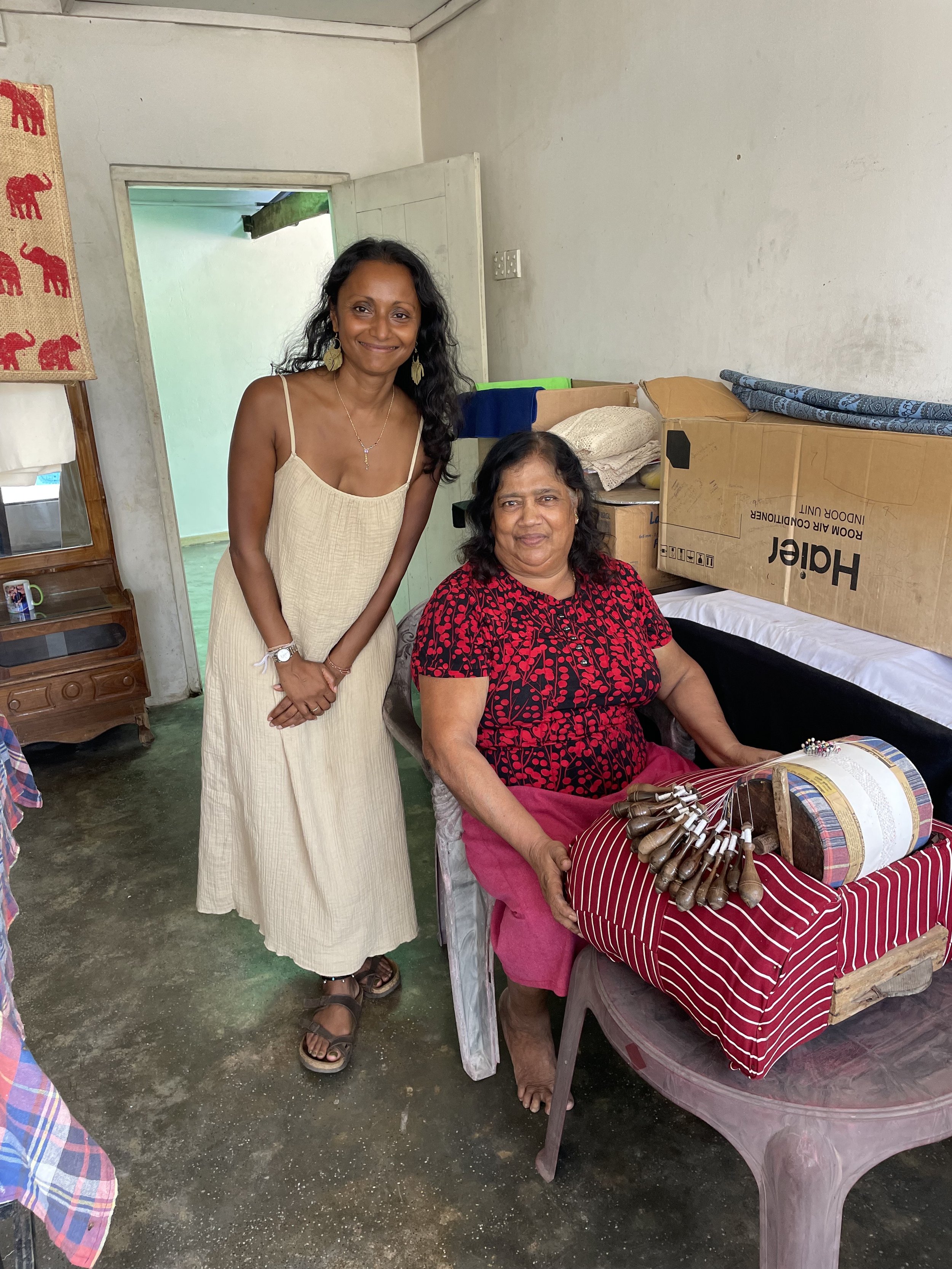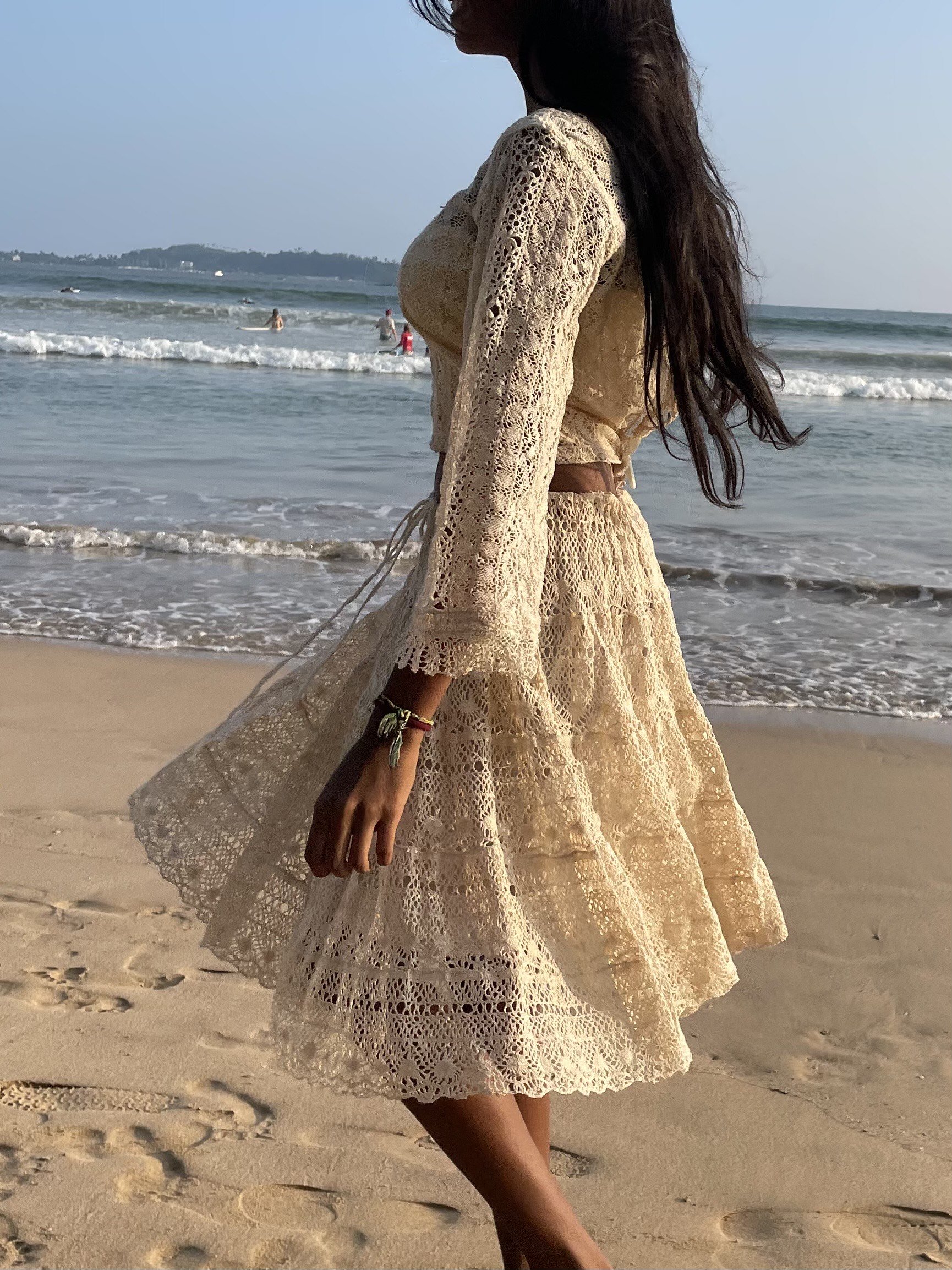The Art of Beeralu Lace: Weaving Heritage into Fashion





Along the sun-drenched southern coast of Sri Lanka, the rhythm of the sea once intertwined with the clatter of wooden bobbins—women weaving lace in quiet rooms just behind the shoreline. This is the world of Beeralu lace, a craft as delicate as it is resilient, passed from generation to generation with fingers, memory, and love.
Believed to have been introduced by the Portuguese in the 16th century, the word Beeralu is rooted in bilro, meaning bobbin. While some trace the origins to colonial wives teaching Sinhala women, others point to the Malays, or even to myth. In southern folklore, Beeralu lace is said to descend from Queen Kuveni, the demon queen of Lanka, who once wove lace upon a sacred rock on Yakkini Duwa—an island long considered haunted. These layered stories only add to its mystique.
Lace weavers in Ceylon.
I first encountered Beeralu lace in Weligama in 2010. Hidden behind the main road, in modest houses, women sat hunched over kotta boleys (padded lace pillows), weaving in meditative silence. I left with a few beautiful pieces—one of them a tablecloth that has since become a personal heirloom.
Years later, after founding Friday Sari Project, I was thrilled to discover the designer Kasuni Rathnasuriya and her label KUR, stocked at PR in Colombo. Her work offered a new language for Beeralu—clean cotton shirts, architectural dresses, and minimal silhouettes that gave the lace space to breathe. We carried the collection in our London store in 2018, and it quickly became a favourite among our customers.
On a return trip last year, I searched for those lace houses again, but much had changed. Coastal development had shifted the landscape. Disappointed, we continued down the road through Tangalle when I noticed a small, hand-painted sign: Lace Centre. We stopped.
Inside, in a modest studio, I found the spirit of those old lace houses alive—and on the wall, photos from the very KUR collection we had once stocked in London. The lace-makers had never seen the garments finished, worn, or styled. I was able to show them images from our store: their craft, their hands, their legacy—woven into fashion in a faraway city. It was a moment of deep joy and connection.
“It was a moment of deep joy—showing the weavers their work in our London store.”
Further along the coast, there are still a few women selling lace from small stalls. One of them is Leela’s Lace, a small shop holding onto tradition with pride. We have a few select one of kind pieces in our online store, each one handmade, each one unique.



“Beeralu lace is not just a textile, it’s a story.”
As I look ahead, I’m more committed than ever to finding ways to collaborate with lace weavers, bring their work into new conversations, and honour this beautiful, heritage craft from our country. Beeralu lace isn’t just a textile—it’s a story. And it deserves to be told, worn, and celebrated.
“We must honour the hands behind the thread.”
SHOP KUR - KUR and PR Sri Lanka






